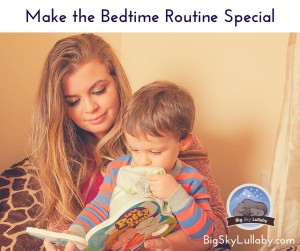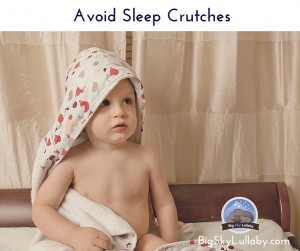The National Sleep Foundation is celebrating its annual Sleep Awareness Week © March 6-13, 2016, to raise awareness for the health benefits of sleep and its importance to safety and productivity. Here are seven sleep tips for children to help your little one get the healthy sleep they need. These sleep tips for children are especially important as we get closer to Daylight Saving Time, which can interrupt their sleep schedule.
7 Sleep Tips For Children
 Make the Bedtime Routine Special: A consistent bedtime routine is crucial to establishing successful sleep habits. The bedtime routine is specific to each family. It might include activities such as reading a book, singing a particular song, or taking a bubble bath. The consistent routine can help provide the child a sense of calming, and lets the child know what to expect each night before it’s time to go to sleep.
Make the Bedtime Routine Special: A consistent bedtime routine is crucial to establishing successful sleep habits. The bedtime routine is specific to each family. It might include activities such as reading a book, singing a particular song, or taking a bubble bath. The consistent routine can help provide the child a sense of calming, and lets the child know what to expect each night before it’s time to go to sleep. One Hour Rule for Napping: Implement the “one hour rule” to ensure restorative sleep. A 60-minute short nap is fully restorative, so it is important to keep a baby in their crib for the full hour even if they wake beforehand. If they wake up before 60 minutes crying, parents can go in quickly and try to soothe them back to sleep.
One Hour Rule for Napping: Implement the “one hour rule” to ensure restorative sleep. A 60-minute short nap is fully restorative, so it is important to keep a baby in their crib for the full hour even if they wake beforehand. If they wake up before 60 minutes crying, parents can go in quickly and try to soothe them back to sleep.- Creating an Ideal Sleep Environment: The child’s sleep environment can have a significant influence on their sleeping pattern. Being mindful of the temperature, distractions, and the amount of light in the room can help ensure a peaceful atmosphere conducive to healthy sleep.
 Staying a Step Ahead with Sleepy Cues: Most children give us hints, or “sleepy cues”, when they are starting to get sleepy and entering their natural sleep wave. It is important to be able to differentiate a child’s sleepy cues from signs of being over-tired, to be proactive with naptime and bedtime. Once a child gets to the overtired state, they usually have missed their sleep wave and it can make sleep more difficult.
Staying a Step Ahead with Sleepy Cues: Most children give us hints, or “sleepy cues”, when they are starting to get sleepy and entering their natural sleep wave. It is important to be able to differentiate a child’s sleepy cues from signs of being over-tired, to be proactive with naptime and bedtime. Once a child gets to the overtired state, they usually have missed their sleep wave and it can make sleep more difficult. Avoid Sleep Crutches: It’s easy for sleep-deprived parents to fall into the trap of using sleep crutches. A “sleep crutch” is something that a child depends on in order to fall asleep, such as laying with them until they fall asleep, nursing/drinking a bottle in order to fall asleep, or motion sleep such as a rocking, car or swing. The process of breaking a sleep crutch is challenging, so it is best to be prepared so you don’t have to go back and correct this behavior.
Avoid Sleep Crutches: It’s easy for sleep-deprived parents to fall into the trap of using sleep crutches. A “sleep crutch” is something that a child depends on in order to fall asleep, such as laying with them until they fall asleep, nursing/drinking a bottle in order to fall asleep, or motion sleep such as a rocking, car or swing. The process of breaking a sleep crutch is challenging, so it is best to be prepared so you don’t have to go back and correct this behavior. Establish a Comfort Item: A comfort item provides a sense of security and enables the child to fall asleep more easily. It considered any tangible object that helps a child fall asleep, such as loveys, special blankets, or stuffed animals.
Establish a Comfort Item: A comfort item provides a sense of security and enables the child to fall asleep more easily. It considered any tangible object that helps a child fall asleep, such as loveys, special blankets, or stuffed animals.- Start Teaching Self-Soothing at 16-weeks: A baby who can self-soothe is a baby who can calm itself down, and fall asleep independently. This means when they wake at night during non-feeding times, they are usually able to quickly fall back to sleep without mom or dad’s help. If you start early on you will have plenty of time to practice your timing and figure out what works for your child.
